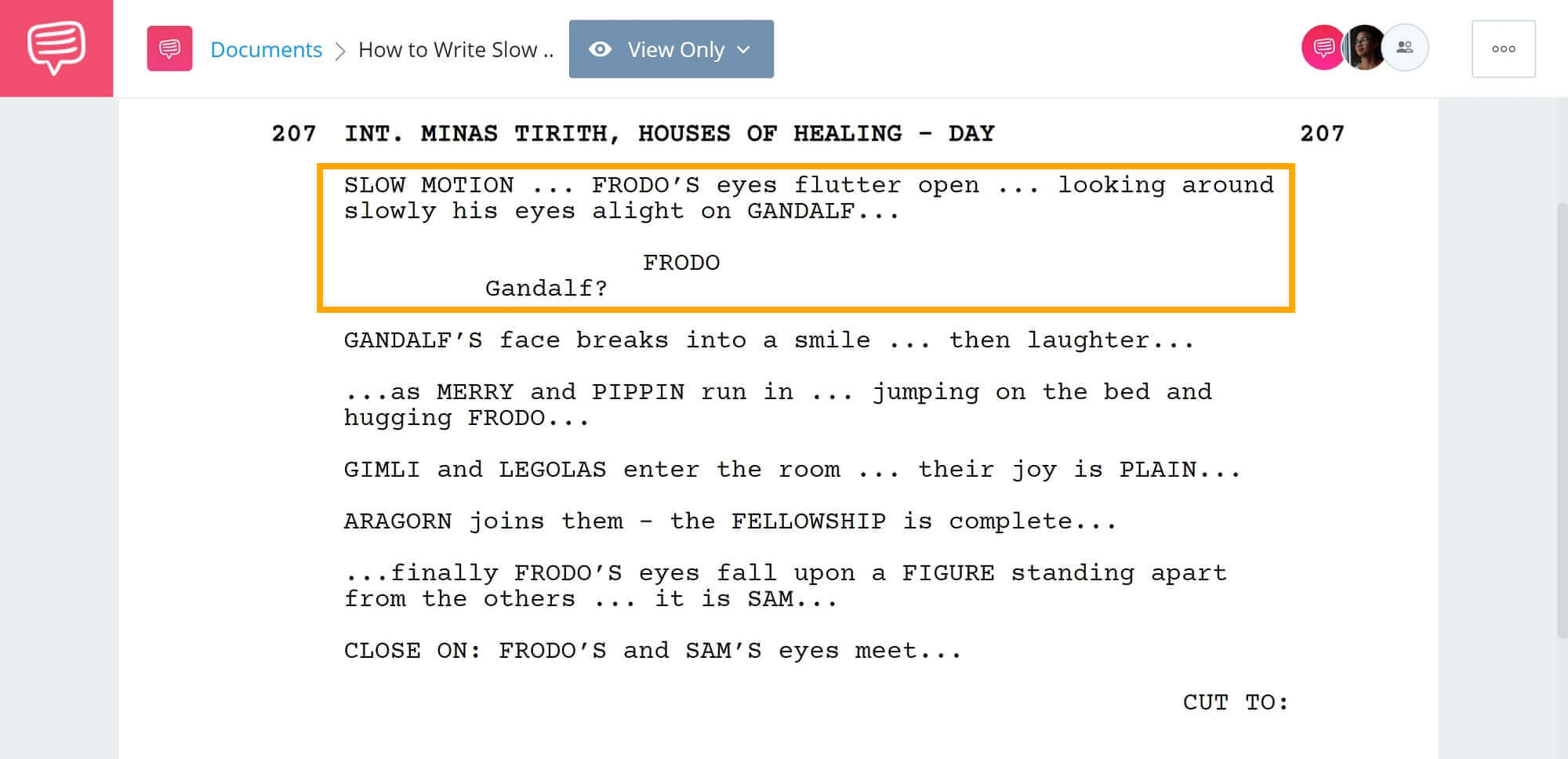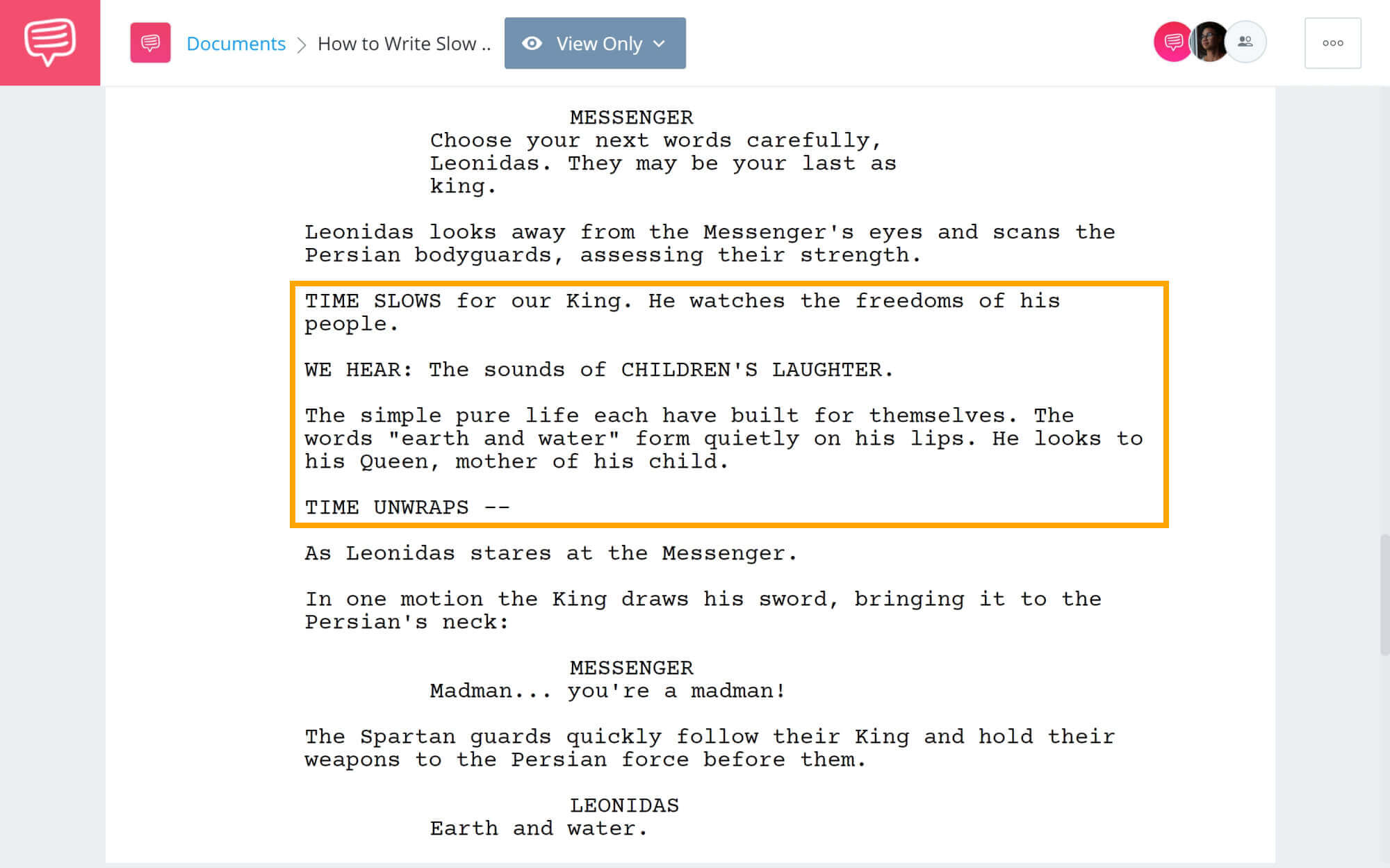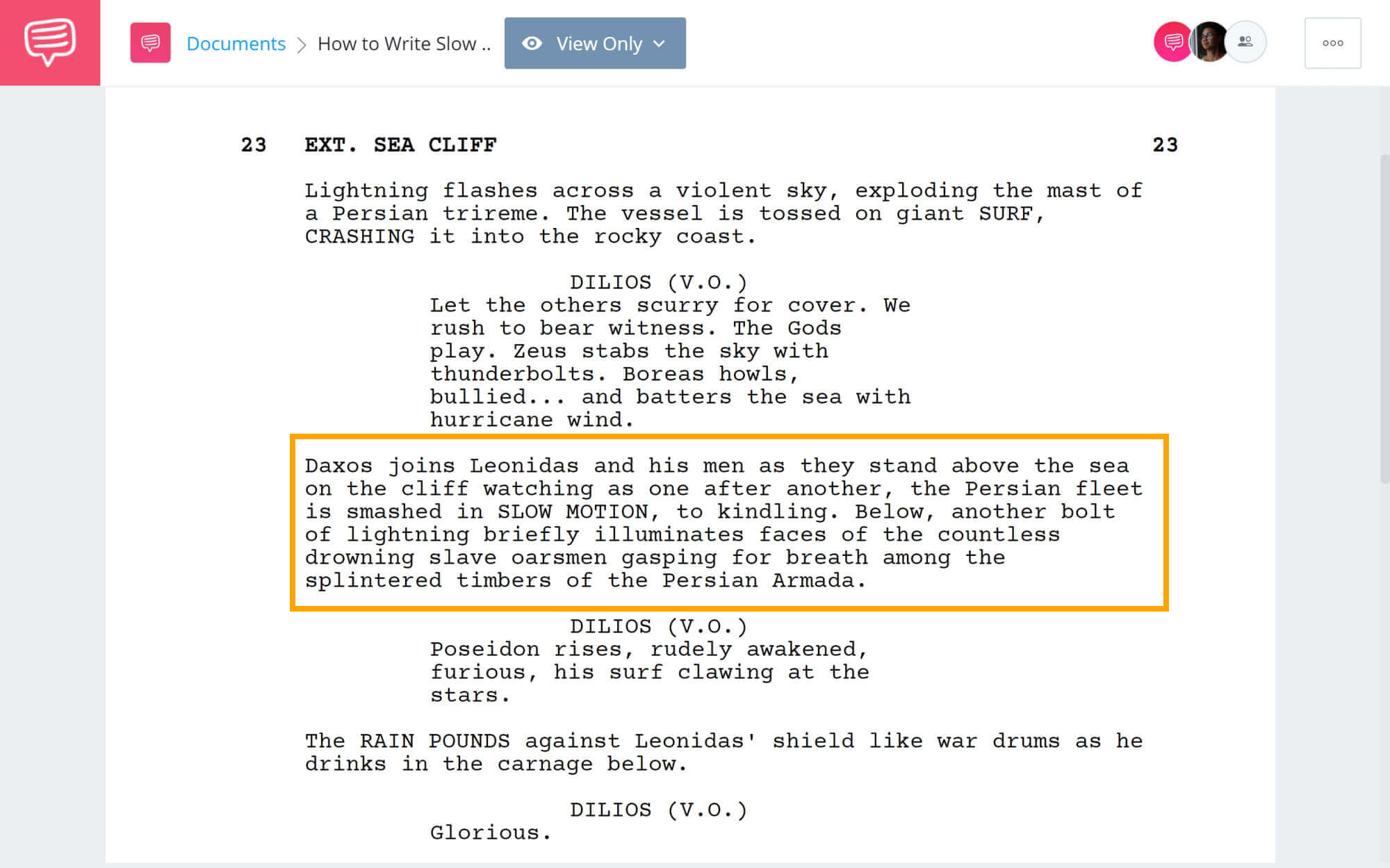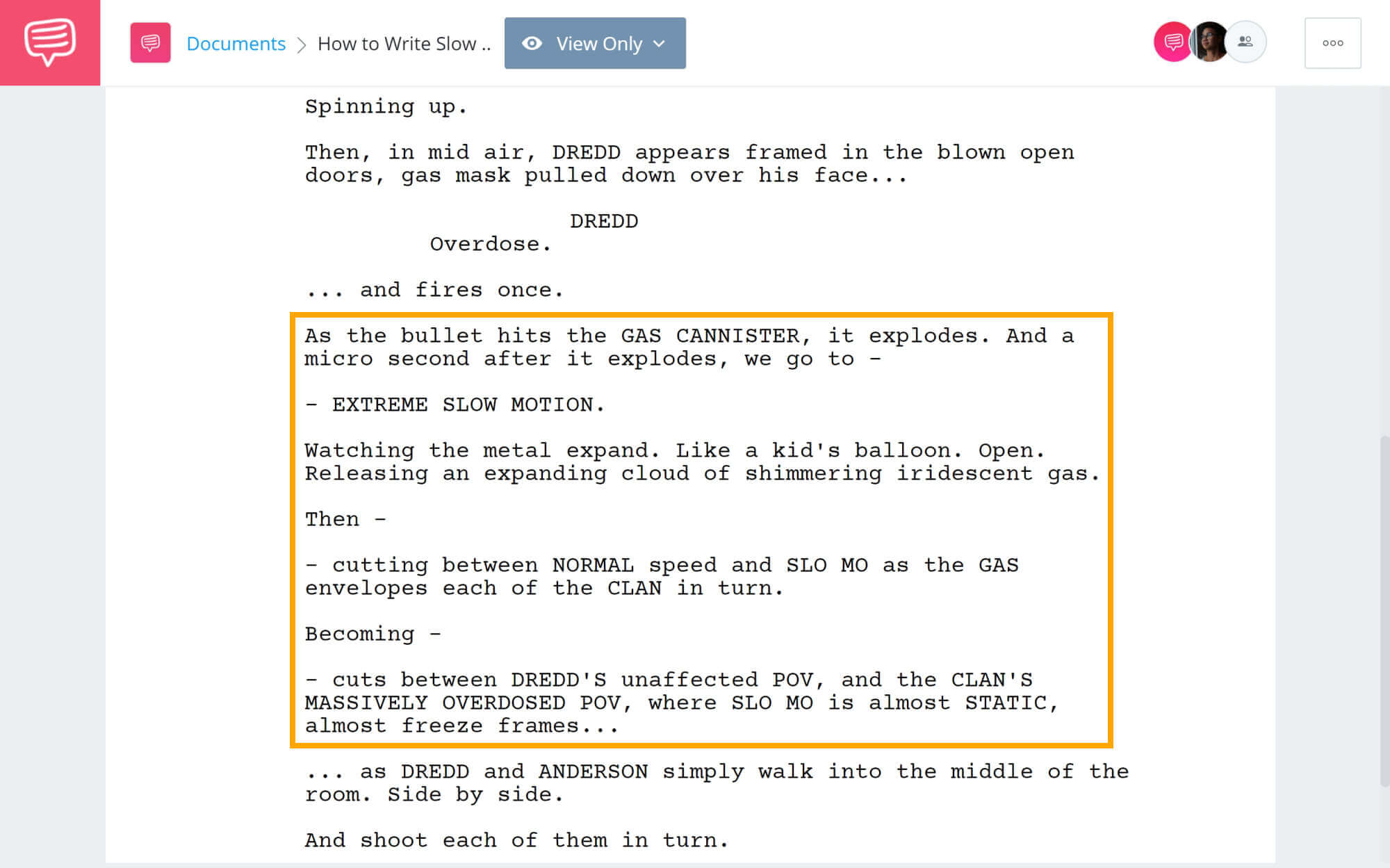From comedy to action to drama, slow motion can be found throughout every movie genre. As camera technology evolves, slow motion is being implemented in both big-budget blockbusters and low budget indie films. Heck, you can even shoot high frame rate slo-mo on your cell phone now. With the tool being more accessible to all filmmakers, it is important to know how to write slow motion in a script.
Slow motion writing in a script
Formatting slow motion in a script
Learning how to write slow motion in a script is a lot more simple than one might think. We created some slow motion writing examples of this formatting technique by using StudioBinder’s scriptwriting software.
If you’re wondering how to write slow motion in a script, simply follow the following steps.
Select the “Action” icon at the top toolbar. Otherwise create a new line of action description to begin the slow motion writing sequence. Simply write “SLOW MOTION:” followed by whatever action you intend to be shown in slow motion. Be sure to end the sequence by writing “END SLOW MOTION.”
Take a look at these slow motion writing examples to get a better idea of the format and how to make these moments clear to the reader.

How To Write Slow Motion Example
While this method is an effective way for any reader to understand what is in slow motion, it is by no means the only way to go about it. If you deviate from this method, just be sure that you are clear about what in the story is in slow motion and that you continue to be consistent with this format throughout the rest of your screenplay.
It is worth noting that many screenwriters leave the decision of whether or not a scene is in slow motion up to the director. Many movies that have iconic slow motion scenes actually do not have it written in the script. Rather, it is a decision made by the director.
Nonetheless, understanding how to write slow motion in a script is important for any screenwriter because it gives your writing that edge. Your reader can visualize how the scene would play out, making for a more compelling read which just might tip the scales in your favor. You should be aware, though, that some directors don't want to see any "direction" written into the script that they didn't write themselves.
If you plan on directing the screenplay you are writing or think that the slow motion writing is vital to the story and it is worth communicating in the script, then by all means implement it.
Related Posts
How to write slow motion in a script
Slow motion writing examples
Here’s one of the many slow motion writing examples from Lord of the Rings: Return of the King that will help you better understand how to write slow motion in a script.
How To Write Slow Motion • Read Example From LOTR
Note that in many slow motion writing examples like this, the writer does not clarify when the slow motion ends. This is most likely because Peter Jackson is the director and co-writer of the film and knows what he has in mind for the moment.
If you are writing slow motion for the sake of another director or reader, it is a good idea to note when the slow motion ends.
Here's another example from 300. You'll notice that the words "slow motion" aren't actually used but that it is clear that it is intended for the scene. "Time slows for our King" — they were even able to work the slow motion cue naturally into the action.
300 Slow Motion in a Script • Read the Entire Scene
If you've seen 300, you know that slow motion is a major part of that film's visual style. Here's a second example from the film and, this time, we get a more direct slow motion cue written organically into the action.
This is important to note because reading a script should flow as much as possible. There are so many starts and stops built into screenplay formatting so anytime you can smooth those over, do it.
How to Write Slow Motion in a Script • Read the Entire Scene
Our final example comes from another film that relies heavily on slow motion. Dredd, with a screenplay by Alex Garland, takes slow motion to the extreme. With complete sequences intended to be shown in slow motion, it's important to isolate those moments clearly.
This gets doubly complicated because this scene cuts back and forth between slow and regular motion. Pay attention to how Garland guides the reader through each moment easily and clearly.
Slow Motion in Dredd • Read the Entire Scene
Slow motion is an incredibly powerful filmmaking and storytelling technique, but it can be over used. Be sure that when you implement slow motion into your film, it is because it serves the story.
Looking at where it has been incorporated successfully will enable you to learn how to write slow motion in a script and when to write slow motion into a script.
Take a look at Cinefix’s top ten moments of slow motion in cinema history to take a look at some examples that utilizes slow motion for effective storytelling.
Cinefix’s Top 10 Slow-Mo Moments of All Time • Slow Motion Writing Examples
Although slow motion is more accessible, and sexy as ever, always be sure that it serves your story, not distracts from it. If you are ever on the fence about using slow motion writing in your screenplay, try writing or imagining the story without it. Does it work better or worse? Once you have an answer, you can now format it into your script.
UP NEXT
How slo-mo creates iconic moments
Slow motion has created some of the most iconic moments in cinema as well as the most forgettable. Now that you know how to format slow motion in your script, be sure to learn the various ways you can use slow motion to tell your story.




